As many of you may have witnessed, on August 21st there was a total solar eclipse (where the view of the sun was entirely blocked by the moon) across much of the continental U.S for up to 2 minutes and 40.2 seconds in the most ideal locations (see the dark band in the image below).1
One CNN poll estimated that up to half the U.S. population planned to view the eclipse! This was the first total eclipse since 1918 that passed from coast to coast.2
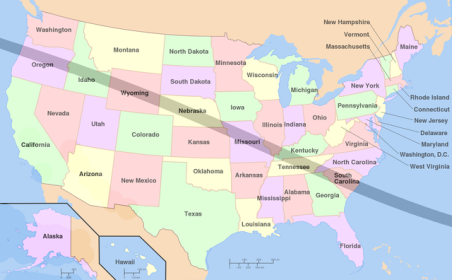
The next total solar eclipse over the continental U. S. will occur on April 8th, 2024 and the duration of total solar coverage will last over 4 minutes in Southwest Texas. In today’s modernized world, solar eclipses are scientifically understood and predicted with a high degree of accuracy. In fact, you can see a list of every eclipse for the next 50 years in this Time article. But can you imagine being in an ancient civilization and suddenly the sun is blocked for over 4 minutes!?
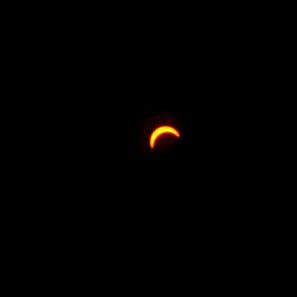
An ancient perspective
In ancient times, solar eclipses were often interpreted as signs of the apocalypse. An eclipse was construed as a profoundly spooky omen, forecasting the dystopian future.3
Just imagine for a moment that you are an ancient human, and your faithful Sun unexpectedly and without warning begins to go dark. And as you stand dumbfounded staring at the sun (without your safety glasses!), you witness the entire thing disappear, with no idea why. Horrific thoughts and exclamations overwhelm you. Panic might set in.
And then just as quickly as the sun disappeared, it slowly begins to reappear. Afterwards, you return to your ancient human routine, questioning what just happened. However mysterious, the event keeps reoccurring, leading ancient humans to record these events. Luckily for us, their doomsday eclipse predictions never panned out.
Some of the earliest calculations of eclipses span all the way back to 700 BCE.4 The Mesopotamians determined the time interval for them to observe an eclipse to be 18 years, 10 days, and 8 hours. The Mesopotamians knew when an eclipse would occur, but why and how was not determined until much later. The Greeks helped determine how planets move, and that the shape of the Earth is a sphere. Even though the Greeks thought the Earth was the center of the universe, they did figure out that an eclipse is the shadow of the moon, cast by the sun, moving across the Earth.4
Modern eclipse prediction

Now fast forward to modern time. On June 18, 2009, NASA launched the Lunar Reconnaissance Orbiter to collect global data, including breathtaking images of the moon’s topography.5 Combining these modern HD images of the moon with the mathematic and scientific formulations of Friedrich Bessel and William Chauvenet, scientists were able to predict where and when the moon’s shadow would pass across the United States last week with incredible precision and accuracy.4
For those of you that observed the solar eclipse on August 21st, did you notice that the moon seemed to travel across the sky from West to East instead of East to West? That is, the moon started on the “right” side of the sun’s disk and slowly traveled to the left across the face of the sun. How can this be? Since we are looking at the sun (with our safety glasses on, of course) while facing South, West will be to our right. Therefore, as the moon moves from right to left in its orbit around the Earth, its shadow will be pulled across the Earth’s surface traveling right to left. This may be slightly confusing, because this occurrence takes us out of our everyday experiences. Luckily for us NASA has an awesome animation explaining this strange occurrence:
Science of safety
Even though the sun is 92,955,807 miles (149,597,870 kilometers) away from our home on planet Earth, gazing directly at the sun can cause permanent eye damage.6 During the weeks leading up to the eclipse, news stations nationwide and NASA were consistently repeating the need to be wearing proper eye protection when viewing the solar eclipse. We intuitively know that staring at the sun is a bad idea, and usually the pain associated is ample motivation for us to turn our gaze away. However, during an eclipse the sun is partially (or totally) covered, and our natural response to look away is lessened – and this is the dangerous part.
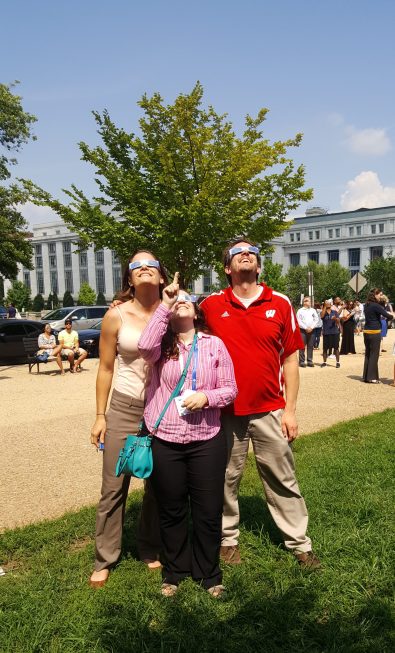
During the 1999 solar eclipse over Europe, more than 40 people suffered from damage or symptoms of damage to their eyes and vision.7 Solar retinopathy is the formal name for the damage that occurs when ultraviolet light floods the retina, scarring your eyes. To prevent eye injury during this year’s solar eclipse, one company in Memphis Tennessee, American Paper Optics, made at least 40 million pairs of solar eclipse glasses!8
Each pair of solar eclipse glasses contain a black polymer, or flexible resin containing carbon particles which block all the harmful ultraviolet (UV) and infrared rays of the light that comes from the sun, in addition to most visible light. You may be thinking “Well, can’t I just wear sunglasses?” The answer is simply no. Most sunglasses are made of glass or polycarbonate and on average block only about 10 – 20% of visible light and some UV light.9 Choosing to wear sunglasses to view a solar eclipse will not guarantee that you do not fall victim to solar retinopathy. If you do not have these specialized solar eclipse viewing glasses, there are DIY methods, including pinhole cameras and solar eclipse projectors made out of cereal boxes, that can also be used to view the eclipse. Regardless of your choice of eye protection, the safety equipment is essential for viewing the partial phases that proceed and follow total coverage during a solar eclipse.
Unusual shadows
As you were intently watching the sky viewing the eclipse, did you happen to glance at the ground or buildings near you? You might have noticed that the shadows cast by trees had suddenly become very odd and quite beautifully strange, with tiny crescent shaped shadows painting the ground around you.
What causes this phenomenon? The small gaps between the tree’s leaves act like pinholes, much like the DIY apparatus you could build to view the eclipse. These small holes allow light from the partially blocked sun to create an enlarged image of the eclipsed sun on the ground!10 These same shadows occur every day, except the images created are circular because the sun is not being blocked by the moon’s shadow, showing the entire solar disk (i.e., a circle). And let’s be honest, these “normal” shadows are sort of boring.
Another truly fascinating phenomenon that occurs because of a total eclipse is called shadow bands or shadow snakes.11 These shadows are more difficult to observe during an eclipse, and require a plain white surface outside (such as a white sheet of paper, several feet wide). In the few seconds before and after totality, bands of alternating dark and light shadows will dance across the white surface (click here to watch a video of shadow bands). During the eclipse, the sun’s image is wider in one direction than it is in the other (a crescent shape). So, when the sun’s light rays pass through atmospheric turbulence and travel to Earth, ripples or bands of sunlight appear. This effect is also what causes distant celestial bodies to twinkle in the night sky.11
Even though we now understand the science behind eclipses, viewing and photographing one is still a thrilling experience. Many researchers and friends of the Center for Sustainable Nanotechnology witnessed the solar eclipse on August 21st from locations all over the U.S. Some of us were even fortunate enough to view totality during the eclipse, and we would like to share some of our photos and videos with you. Enjoy!
First, CSN graduate student Joe Buchman and undergraduate Kaitlin Landy from the University of Minnesota both went down to Missouri to view the eclipse.
Below, Joe and friends demonstrate proper safety attire and Kaitlin’s photo shows the 360-degree “sunrise” effect that occurs just before totality.
Several CSN members (including the author of this post and Associate Director Christy Haynes) were in the DC area on the 21st. An American Chemical Society conference was going on and the ACS provided eclipse glasses to attendees.
Although they were not in the path of totality and had mostly overcast skies that day, students in Minneapolis and Chicago ended up having a pretty good view as well.
Finally, several friends of the blog from around the country (LA, Tennessee, and Oklahoma) also gave us permission to share their photos (thanks!).
A solar eclipse is a beautiful, natural event – seeing it, feeling it, hearing everyone’s reaction, and being part of the experience was truly exciting. And even after centuries of recording the sun’s and moon’s patterns, the phenomenon of an eclipse will undoubtedly continue to inspire future scientists and engineers.
So, what are your plans for viewing the 2024 eclipse?
REFERENCES
- http://www.eclipse2017.org/2017/in_the_path.htm
- https://www.wunderground.com/cat6/historical-perspective-total-solar-eclipses-us
- https://www.space.com/37805-eclipses-were-omens-in-ancient-world.html; http://news.nationalgeographic.com/news/2008/07/080729-china-eclipse_2.html; http://gizmodo.com/four-incredible-eclipses-history-never-forgot-1797347632
- http://www.popsci.com/people-have-been-able-to-predict-eclipses-for-really-long-time-heres-how
- https://lunar.gsfc.nasa.gov/mission.html
- https://www.space.com/17081-how-far-is-earth-from-the-sun.html
- https://www.livescience.com/20433-solar-eclipse-blind.html
- http://wreg.com/2017/07/27/bartlett-company-sells-millions-of-glasses-for-solar-eclipse/; https://www.bizjournals.com/memphis/news/2017/08/28/how-the-solar-eclipse-changed-one-local-companys.html
- http://www.ocregister.com/2017/08/15/how-the-lenses-in-solar-eclipse-glasses-protect-your-eyes-from-the-sun/
- https://science.nasa.gov/science-news/science-at-nasa/2003/30may_solareclipse2
- https://eclipse2017.nasa.gov/exploring-shadow-bands; https://eclipse2017.nasa.gov/what-are-shadow-bands
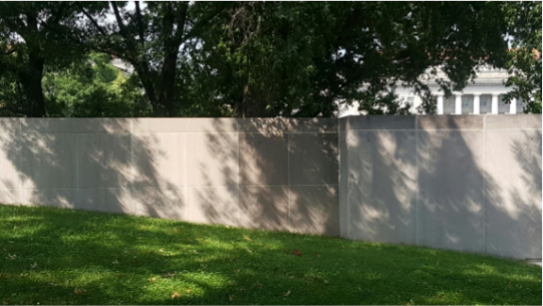







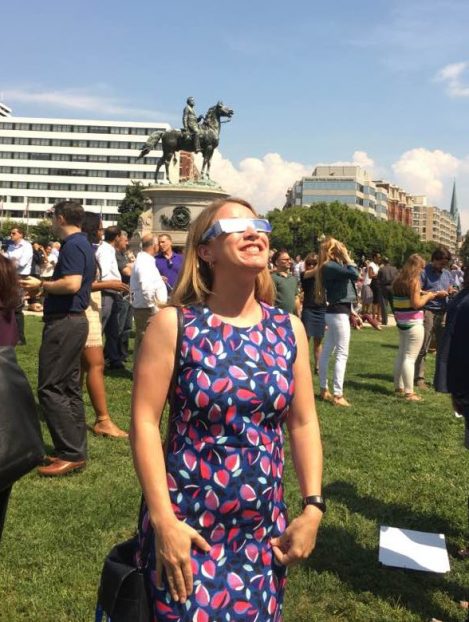








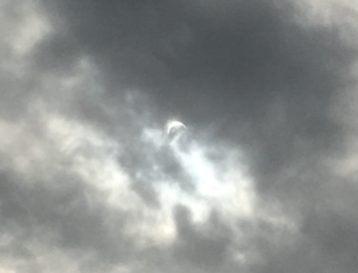





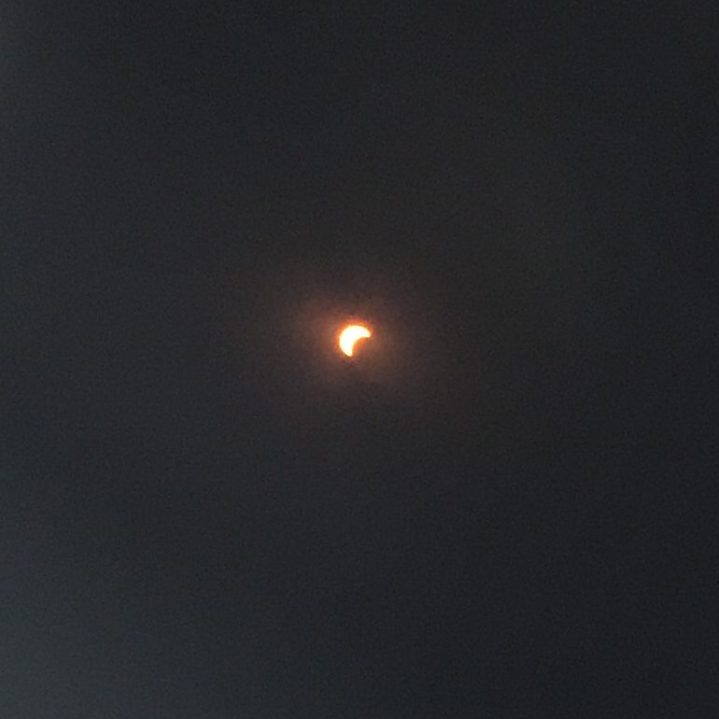

[…] on 1 min agoSeptember 1, 2017 by Sustainable […]